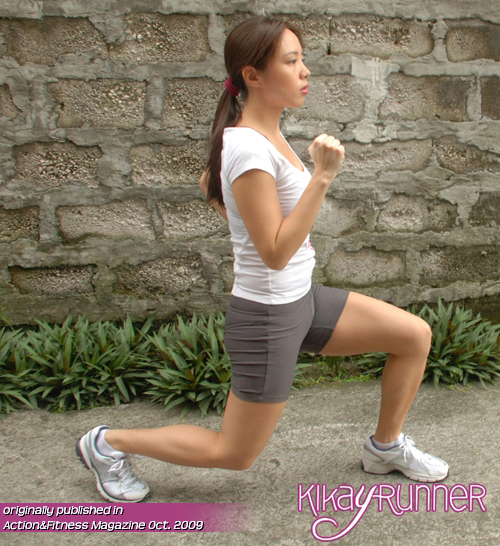Running is one of the hottest sports in the country now. Just check out the next road race and you’ll find thousands of pavement-pounders raring to go at the gunshot. However, before these runners get sent out the gate, race organizers will have someone lead them in a short warm-up, and for good reason: warming up helps more blood flow to the muscles, preparing them for the exertion to follow.
A good warm-up should take your muscles through the range of motion they will be undertaking. This is called a dynamic warm-up, and helps prevent injury from strains and tears caused by the muscle going through a movement it was not prepared for. It is different from the traditional warm-up which involves static stretching: muscles held in one position to help them lengthen and cool down, which is the opposite of what you want your muscles to be. You perform dynamic warm-up moves actively, firing your nerves and muscles in the specific movement pattern they’ll be doing. This ensures your muscles do not lose any warmth or “springiness”. (Research has shown that holding a muscle in a static stretch decreases its explosive twitch capabilities.) Because dynamic warm-ups are matched specifically for the workout you’re about to do, they also help keep your mind focused and sharp on what’s coming up.
Whether you’re at a race or just training on streets, tracks, or trails, begin your warm-up with a 5-to-15 minute easy run, then do these easy-to-remember dynamic warm-up moves with your belly lightly drawn in to engage your core and protect your back.
Lunge Walk
lunge walk
Take a big step forward and drop the back knee vertically down, then step your back foot forward to lead you into a lunge on the opposite leg. Keep your chest and head up and swing your arms naturally to help you keep your balance. This activates your glutes and quadriceps.
Leg Drives
leg drives
Hold onto a wall for balance. Bring one leg forward with the knee bent, then kick your heel backward until your leg extends fully and your forefoot touches the ground. After starting slow and then building up speed and range of motion, switch legs. This warms up your glutes, hip flexors, hamstrings, and limbers up your hips.
You can also do leg swings forward and back and side-to-side.
High Knees
high knees
Take short skipping steps, lifting your knees up alternately. They should be high enough for you to feel work in your hip flexors, but not too high to make you start leaning backwards. Land lightly on the balls of your feet. This warms up your calf muscles (so important when sprinting!) and will remind your body to land lightly on your feet.
Heel Flicks
heel flicks
Hamstrings get a warm-up as you kick your heels up behind you alternately. Make sure your heel lightly contacts your buttocks on each rep.
You can also lift your thigh to hip-height and bring your heel under your buttock to get a deeper hamstring activation.
Chest Stretch
chest stretch
Aside from warming up your legs, you also need to warm up your upper body because you use your chest and arms to counterbalance your legs when running. (Also, leg cadence is directly related to arm swing cadence, so if you need an extra speed boost you can swing your arms faster.)
With arms at shoulder height, elbows bent, bring your elbows forward and back so that your chest expands and contracts. You can also roll your shoulders forward and back.
These photos and an earlier version of this blog post first appeared in Action&Fitness Magazine October 2009.






